You might have some of the best products that are also the customers’ need of the hour. You are confident of making a sale but somehow the customer who has passed through stages of funnels doesn’t become your customer. A little analysis of your customer behavior at this stage or simply asking for their feedback will give you an insight into how your shipping policy impacted their purchasing decision.
But why are these shipping policies so crucial that 67% of shoppers check a store’s policy before making a purchase? If you’re a retailer who has just opened an online store, this article stands to provide you with everything you need to create a fine shipping policy that works out well for your business. If you’re someone with experience but still looking for ways to perfect your shipping policy and improve conversions, then you’re at the right place as well. Stay tuned to learn more about shipping policies and the role they play in your business.
The Role of Shipping Policies in Your Business
For the e-commerce novice here, let’s revisit things a little.
Shipping policies are simply a document that covers a set of guidelines and procedures to highlight the ways an e-commerce business handles the shipping and delivery of its products to customers.
While a shipping policy might simply seem like a webpage that communicates your shipping procedures to customers who’d like to shop with you, in reality, it holds more power to help your business:
- Set clear expectations about your shipping and delivery times with your customers to offer them convenience and by extension a positive experience as they are awaiting their orders
- Improve conversions by including all necessary details to have a comprehensive and shopper-friendly shipping policy
Craft your shipping policy to suit your business’ needs when it comes to aspects such as returns and exchanges to prevent frauds such as wardrobing and reduce unnecessary costs in the long run.
The Whats And Whys of Shipping Policies
Starting a shipping policy from scratch or looking to make changes to your existing one? Here are some things that you need to include (also learn how these additions bring benefits to your business).
1. What are the shipping methods available at your e-commerce store?
The most crucial detail that you cannot afford to miss out on is highlighting different shipping methods for your customers to choose from. For starters, mention whether you provide expedited shipping, BOPIS, international shipping, etc. Remember, providing multiple options when it comes to shipping methods is always better as customers feel in control of their decision by choosing an option that best suits them.
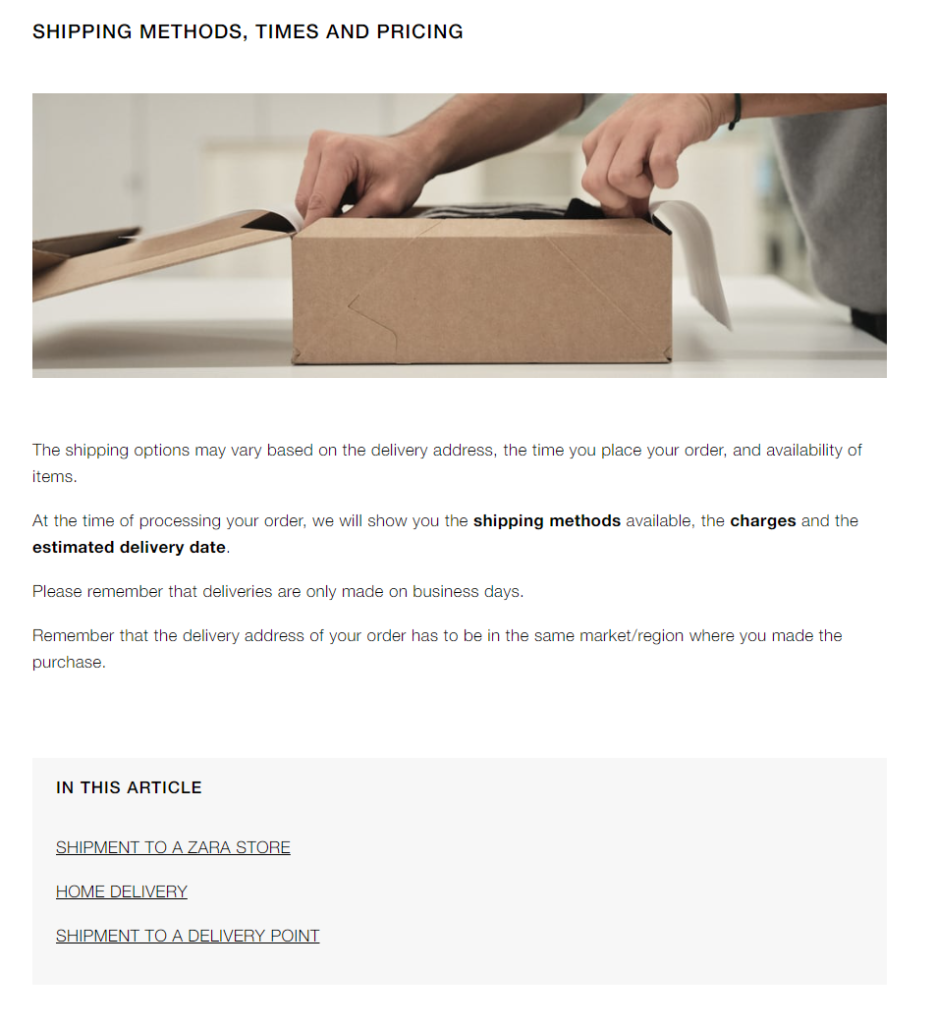
2. When can customers expect their orders?
Mentioning estimated delivery times answers a major question on the customers’ minds “How soon will I receive my package?”. Start by displaying the order processing time and include delivery times based on different shipping methods. By keeping your customers in the loop of such information, you can reduce their pre-parcel anxiety and ensure a positive experience.
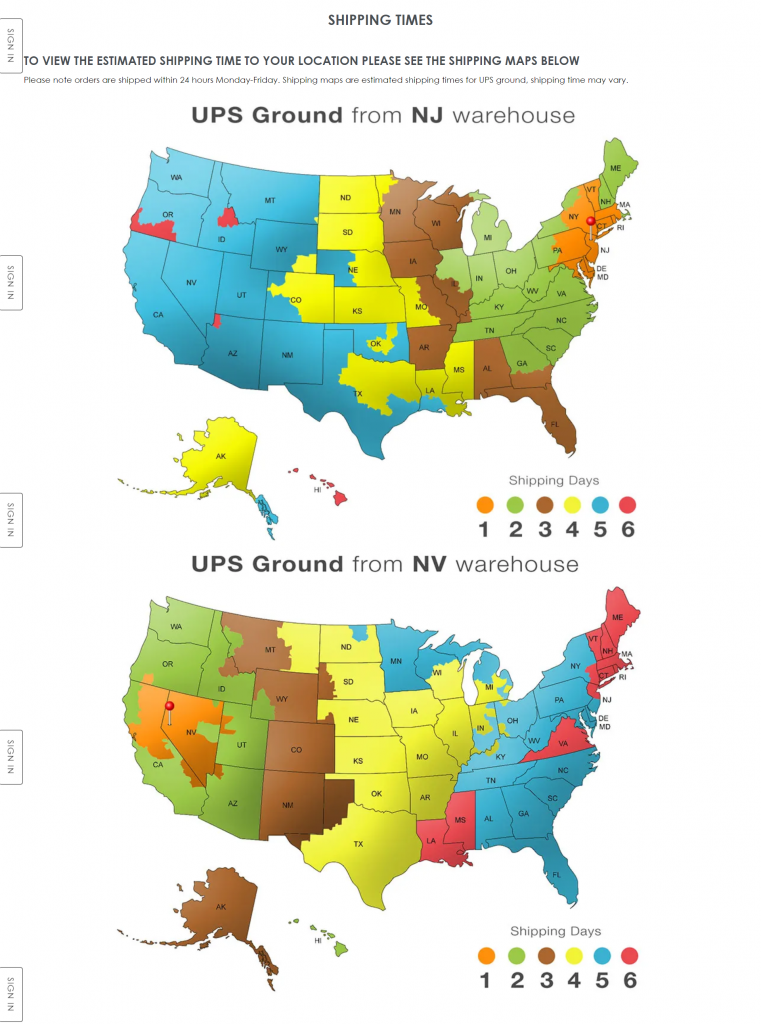
3. How much do you charge for shipping?
48% of shoppers abandon their carts due to extra costs. Adding to these woes is 16% of shoppers bailing out early because they couldn’t see or calculate the total cost of the order upfront (Baymard’s study). Thus, it is always a good ploy to display shipping costs to your customers before they start adding items to their cart. Also, highlight what is the minimum purchase for shoppers to become eligible for free delivery, etc to motivate them to spend more. In case if you are shipping internationally, you can add a breakdown of the increase in costs based on international taxes and other additional charges.
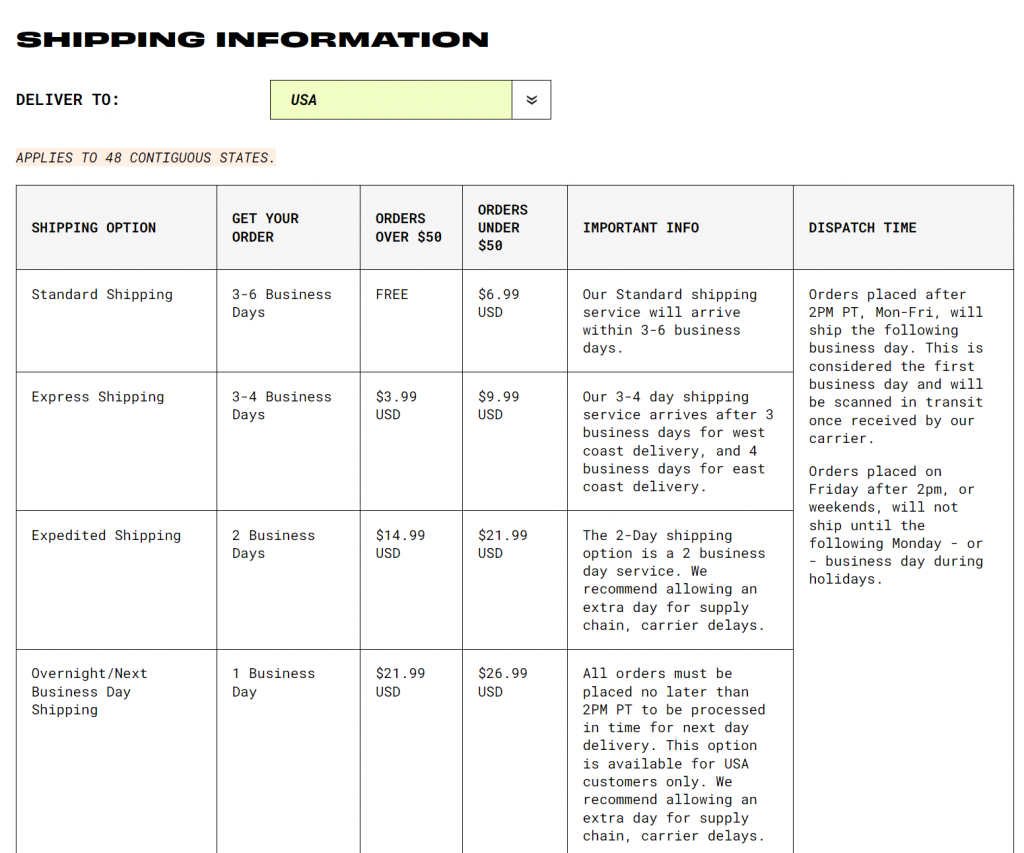
4. Are there any shipping restrictions?
In addition to delivery ETAs, you can also include a message in your shipping policy in case there have been unexpected incidents such as bad weather, peak shipping periods like the holiday season, lockdowns, supply chain crises, etc, to inform customers of their orders, possibly taking more time than usual to reach them. Shipping restrictions also occur in the form of your products facing customs regulations at certain domestic or international destinations. For your shoppers from such locations, you can highlight a clause on where you ship to.
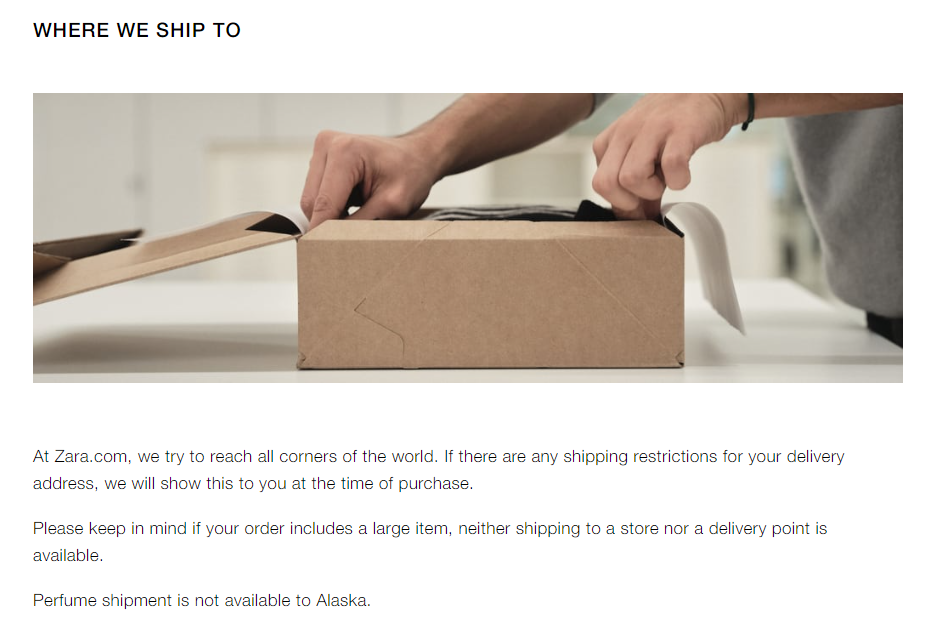
5. Where can customers track their orders?
Customers are increasingly anxious regarding their orders and with growing technology, they expect brands to provide them with the ability to track their orders at all times. At that moment, you cannot expect them to reach out to your support team and wait for a response. Instead, add a “track order” button that sends them to the order tracking page, where they can periodically track their shipments. You can also mention that regular shipping updates will be sent to them via notifications to ease their anxiety.
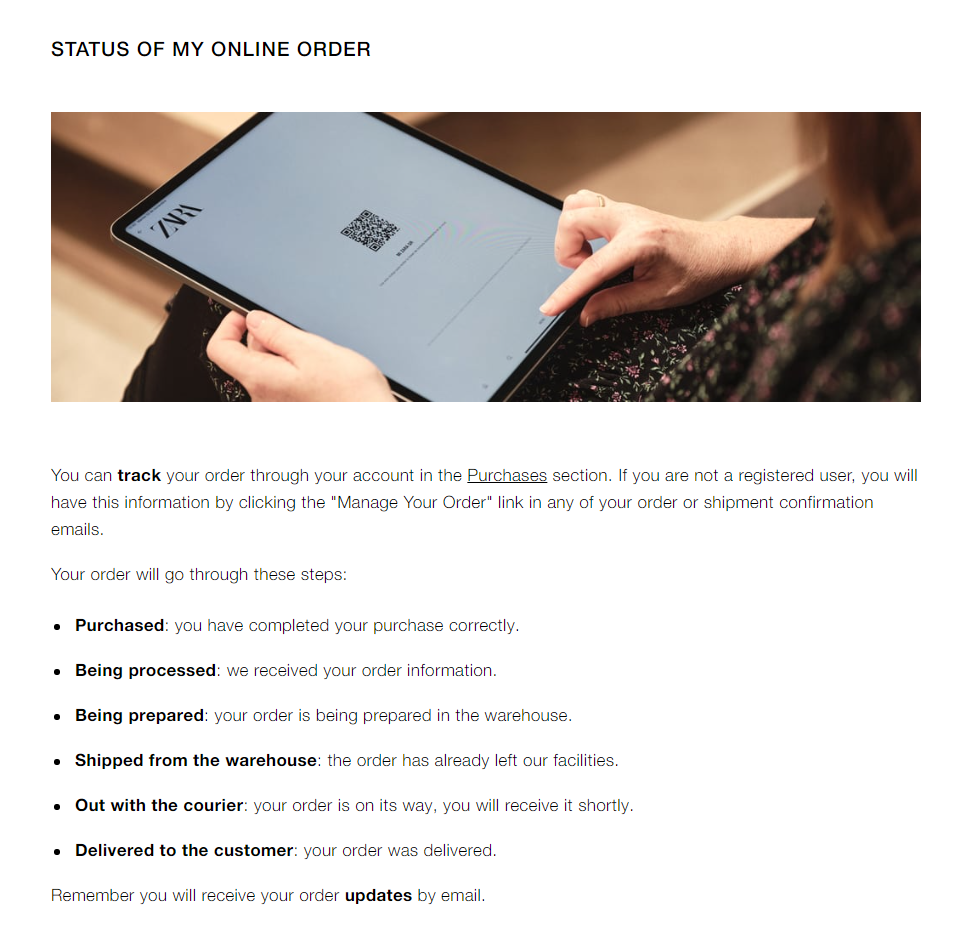
6. How can customers reach out to support teams?
Customers during the post-purchase phase demand support for two major reasons: when they are unable to determine the status of their package or to file a complaint when it gets lost or damaged. While this is a problem for your support reps on its own, what makes it worse is customers’ being unable to find where to reach support for help. In such cases, their frustration worsens and they are prone to take their grievances on social media and tarnish your brand’s reputation. To avoid this, simply add and highlight simple steps on how they can reach your support (via chat, email, or phone) to make things convenient. Keep in mind that this is a short term fix at best. For overall reduced post-purchase-related support queries and saving your support reps’ time, take a proactive approach to resolve delivery issues.
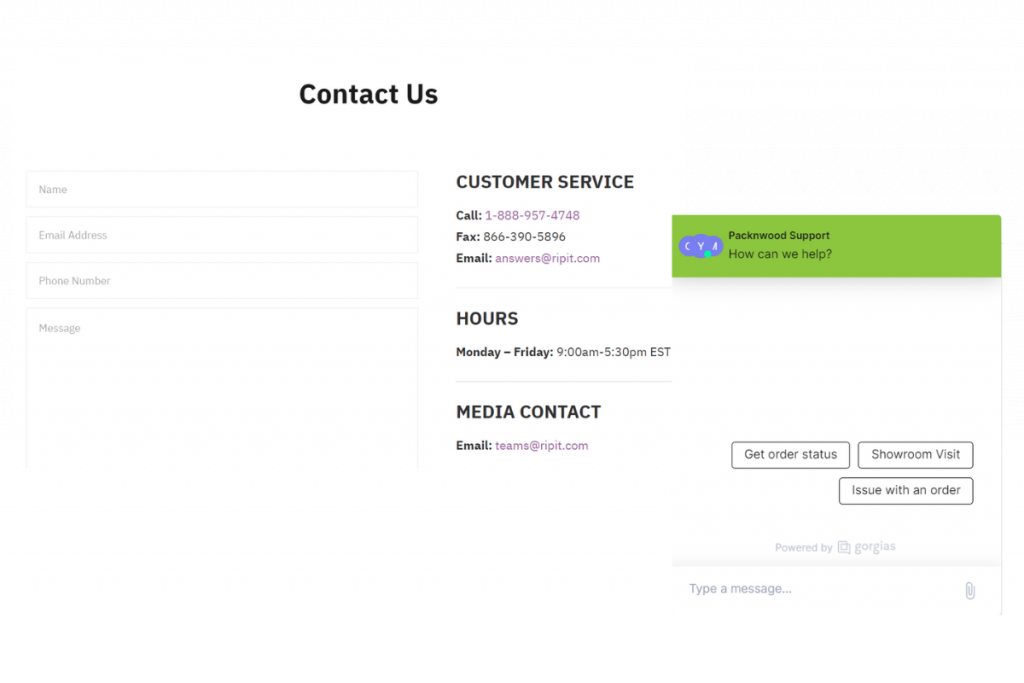
7. What should the customers do in case there’s a need for a return or an exchange?
The average e-commerce return rate is 20-30%. While brands such as yours often assume returns to be a headache, the customers don’t feel that way. They are more likely to choose a brand that offers seamless returns. Thus, it is wise to take the opportunity of capturing your customers’ attention by mentioning the time it takes from your end to process a return, the steps involved, the details and actions needed from their end, deadlines, refund policy, costs (if any), etc on the shipping policy page to provide easy access.

Bonus: Things To Cover While Working On Your Shipping Policy
The points we have discussed so far are the bare minimum when it comes to shipping policy. You have no option but to cover them to satisfy your customers before they start adding items to their carts. To stay ahead of the competition and delight your customers, you need to do certain things more.
For starters, you can add an “additional information” section where you cover details such as:
- The carrier(s) you work with (for queries),
- Store working days (for calculating order processing time)
- Time taken to credit the refund when an order gets canceled before delivery
- Clauses of holiday/peak season shipping policy, etc.

If you have extensive information at hand but feel all of it should be clear enough for the customers to understand, then the best option is to set up a FAQ section on your shipping policy page that covers all the bases. You can populate your FAQ section with common questions on the customers’ minds like:
- How long will it take for the order to get delivered?
- What is the price for the shipping?
- What if the order doesn’t get delivered? etc.
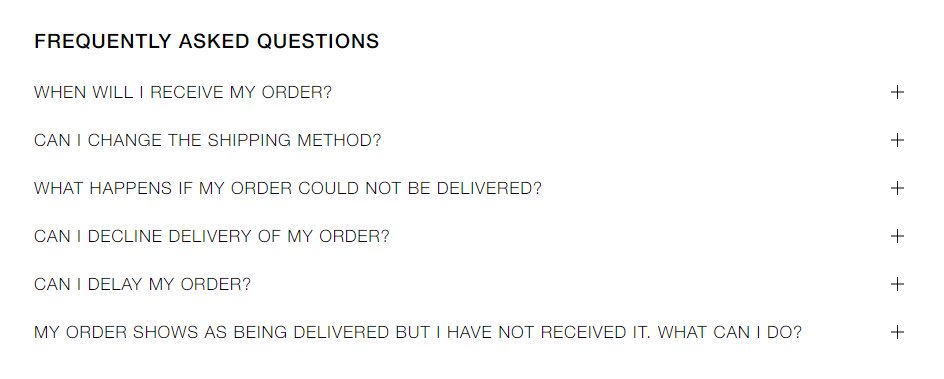
Once you’ve planned everything on your shipping policy, the next step is to create and publish them. There are several places on your website to display your shipping policy to have the best effect. You can go with a footer link, in the hamburger menu that takes customers to your help center. Additionally, you can add links in their checkout process, shipping confirmation notifications, etc.
(If you haven’t already) You don’t have to start from scratch to develop a shipping policy for your e-commerce store. Sites like Shopify can help you with a template that you can modify to create your own.
Final Word
Thanks to increasing competition, today’s shoppers have a lot of options to choose from for their shopping needs. If you’re an e-commerce merchant who would like to place their business at the forefront, aspects like shipping policy should be well-crafted. Your shipping policy is a necessity that customers checkout even before adding items to their cart, thus, suiting your customers’ needs should be a priority to make a great first impression and improve conversions.







